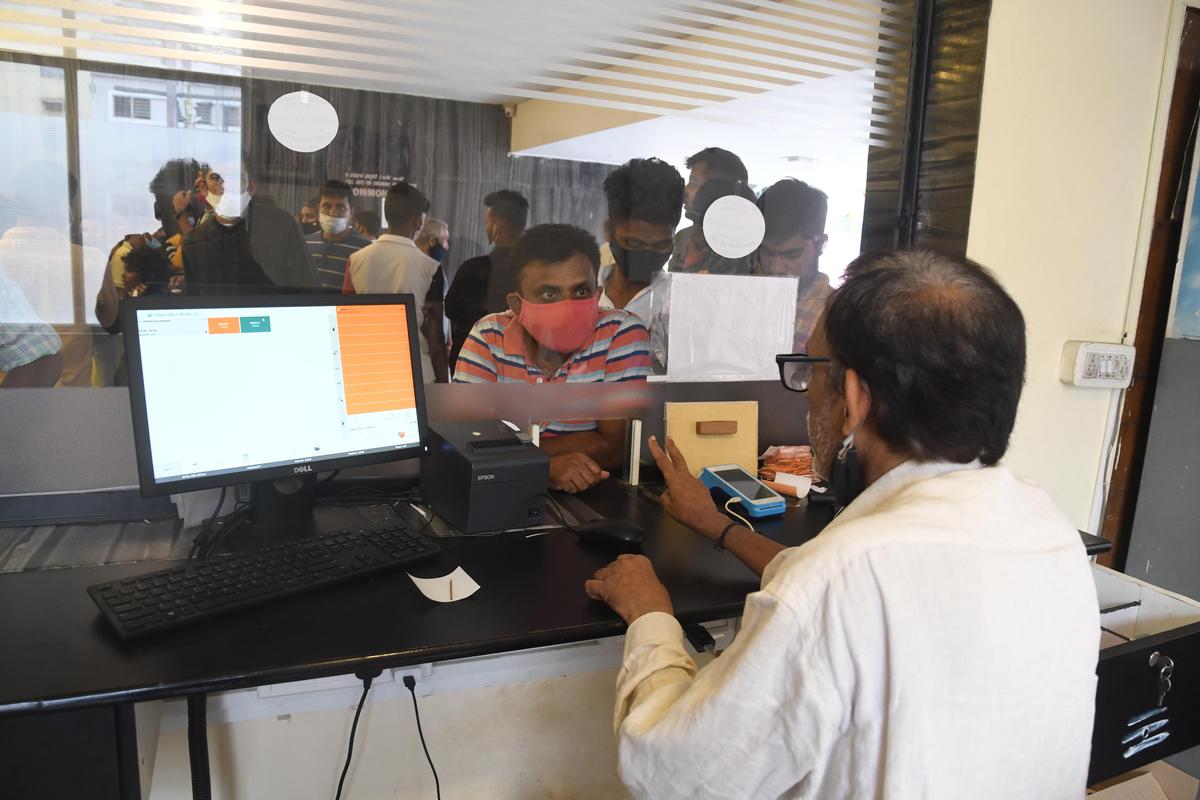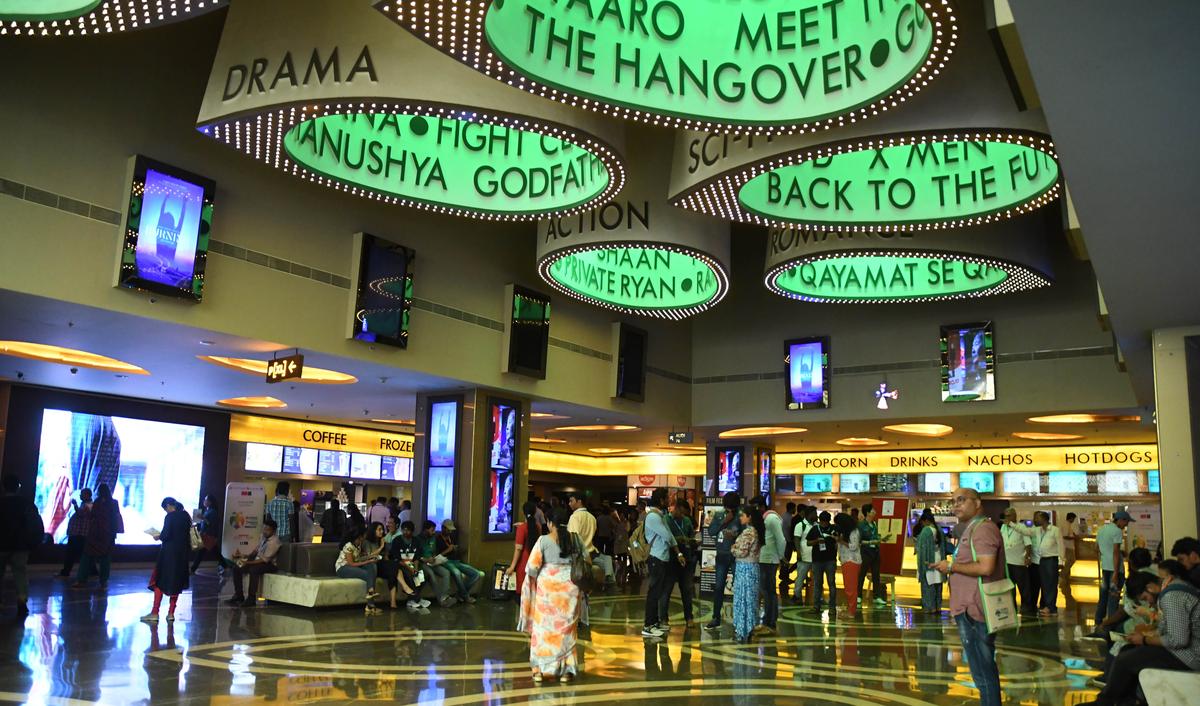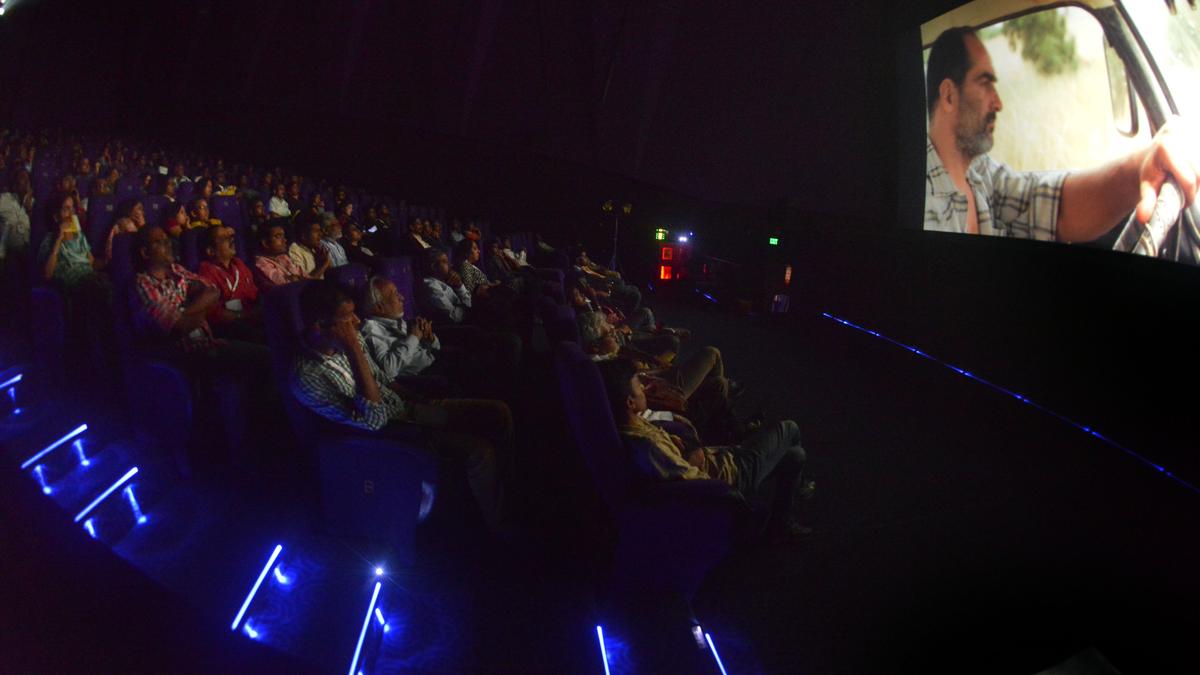Harish Mallya, an ardent film buff from Bengaluru, concedes that his theatre visits have come down post the COVID-19 pandemic period. An engineer and a curator of world cinema for the Bengaluru International Film Festival (BIFFes), Harish had the habit of watching a film every Friday without fail for decades.
In the current situation, he highlights a development that reflects the falling demand for theatre viewing. “Earlier, I would book my seat in advance, thanks to the mad rush for tickets for marquee movies in the opening weekend. However, in the last couple of years, I have been able to get tickets at the box office of multiplexes even for the highly anticipated films across languages,” he says.
There is no denying that theatres are facing their biggest test today. Factors such as the advent of streaming platforms and high-priced tickets have changed the viewing habits of the average movie-goer. In 2024, PVR Inox Ltd. shut down 85 underperforming screens. The following year, the multiplex chain decided to close 70 more properties. Similarly, single screens continue to suffer, with the total count in Karnataka coming down to 500 active screens post pandemic from 650 earlier.
Bollywood star Aamir Khan delved into the issue at the recently held World Audio Visual and Entertainment Summit (WAVES) in Mumbai. Aamir, one of the canniest box-office minds, suffered a failure with his previous film Laal Singh Chaddha (2022). As he awaits his next, Sitaare Zameen Par, the actor sounded alarmed about the prospect of theatrical releases in the coming days.
“For the size of the country and the number of people living here, we have few theatres. I think we have 10,000 screens. Only 2% of the nation’s population watches movies in theatres. In the U.S., which has one-third of India’s population, there are 40,000 screens. China is ahead with 90,000 screens. There are districts and vast areas in India which don’t have single-screen theatres. Whatever issues we have faced over the decades are about having more screens. According to me, this is what we should be investing in,” Aamir said at the event.
A file photo of a film being screened in a single-screen cinema in Bengaluru.
| Photo Credit:
Karnataka government proposes a cap
Movie-watching, especially in multiplexes, is a costly experience. Bengaluru has remained infamous for the high-priced tickets. In this context, the State government’s proposal to cap the film ticket price at ₹200 came as a ray of hope for film buffs. The March 7, 2025, announcement reminded people of a similar call from Chief Minister Siddaramaiah in his previous term, in 2017. The Multiplex Association of India (MAI) appealed against the government’s decision in court and brought a stay on the order at the time.
The government seems to have kept the issue in “suspended animation”, says author and film critic S. Shyam Prasad. “The Chief Minister has aligned with the public sentiment, but I don’t think market forces will allow him to implement the price cap. He has just made a populist statement,” he says.
Incidentally, just two months after proposing the price cap in 2017, Siddaramaiah spent ₹1,050 to watch Baahubali 2: The Conclusion at a multiplex.
An executive from a popular multiplex chain, on condition of anonymity, reveals that tickets for big films range from ₹700-₹800 in the opening weekend. The price may go up to ₹1,500 in premium screens such as Gold Class or Insignia. Bengaluru multiplexes had grabbed the eyeballs for exorbitant rates for big-star films such as KGF: Chapter 2 (maximum rate of ₹2,500), RRR (₹2,000), and Ponniyin Selvan (₹1,200).

The number of single-screen theatres in Karnataka came down to 500 post pandemic.
| Photo Credit:
Dynamic ticket pricing
The makers of such magnum opuses vouch for the special pricing of tickets as seen in the case of Pushpa 2: The Rule.In December 2024, actorAllu Arjun thanked the Andhra Pradesh government for approving the ticket price hike and called it a “progressive decision”. The Andhra Pradesh government permitted theatre owners to revise ticket rates for the first 10 days for other films, such as S.S. Rajamouli’s RRR (2022) and the Ram Charan-S. Shankar film Game Changer (2025).
“Producers want to recover the money in four days or so. The opening figures matter a lot to them. They want to earn ₹100 crore to ₹150 crore on the first day. Nobody is interested in running a movie for the long term,” Gautam Dutta, CEO, revenue and Operations, PVR INOX, had said during the release of Pushpa 2: The Rule.
While Tamil Nadu and Kerala have fixed ticket rates not exceeding ₹200, the Andhra Pradesh government has catered to the requests of makers of big-budget films to alter the ticket prices in the first week. This move could be problematic, as not all big films elicit positive reactions. The interest in a movie might fizzle out due to poor buzz, as family audiences might hesitate to come to cinemas unless the movie is worth experiencing on the big screen.
In such cases, producers and distributors suffer losses, says M.R. Rajaram, vice-president, Karnataka Film Exhibitors Federation. “Multiplexes, which deal in the percentage sharing system with the makers, are the biggest gainers from the price hike of tickets. They play a strong role in altering the costs,” he says, adding that single screens do not raise the ticket fare by more than ₹100 for A-lister films.
Kannada filmmaker Karthik Gowda, founder of the production house KRG Studios, has been pushing for dynamic ticket pricing for the last two years. “A film will open with a specific price, and if it gets a good response, the ticket price will increase. We at KRG Studios are discussing this with the exhibitors,“ Karthik had proposed in 2023.
Yogi G. Raj, co-founder of KRG Studios, says it is the way forward. “We distributed Daredevil Musthafa,a content-oriented Kannada film from newcomers. We charged just ₹1 for the premiere. Those who came to the show loved the film and spread the word. You should treat each film differently and increase the price based on people’s response,” he says.
To please a price-sensitive audience, the Multiplex Association of India organises National Cinema Day frequently. On that day, tickets are priced at ₹99 for all shows. PVR INOX has also introduced a movie pass called PVR Passport, with which you can watch four films a month for ₹349.
The OTT challenge
Despite these changes, many people continue to watch their favourite films in the comfort of their homes as they find OTT subscriptions affordable. Amazon Prime Video offers an annual subscription at ₹1,499, while Netflix provides a monthly subscription at ₹649 with an option to share the account with four people. JioHotstar offers an ad-free annual subscription at ₹1,499. The amount is much lower for mobile subscriptions across platforms.

A file photo of a multiplex in Bengaluru. Apart from the ticket rates, the steep prices of popcorn and other food and beverages at multiplexes have often angered the public.
| Photo Credit:
Expensive refreshments
Apart from the ticket rates, the steep prices of popcorn and other food and beverages at multiplexes have often angered the public. “Multiplexes are selling social status instead of promoting cinema,” says Rajaram of the Karnataka Film Exhibitors Federation. A regular-sized popcorn tub costs ₹350 to ₹400, while the maximum price is around ₹600 at a multiplex.
PVR Inox Ltd. continues to face the heat from audiences over the pricing of refreshments. Journalist Tridip K. Mandal posted on X (formerly Twitter) explaining why people prefer OTT platforms over theatres. “₹460 for 55 gm of cheese popcorn, ₹360 for 600 ml of Pepsi. Total ₹820 at PVR Cinemas, Noida. The expenditure is equal to the annual subscription of OTT platforms. No wonder people don’t go to the cinemas anymore. Movie watching with family has just become unaffordable,” he wrote.
His post went viral on social media in 2023, forcing PVR Inox to introduce the ‘Bestsellar@99’ offer, through which people can buy refreshments at ₹99 from Monday to Thursday for shows till 6 p.m. However, the offer comes with restrictions that vary from city to city.

A file photo of Santosh theatre in Bengaluru.
| Photo Credit:
On the opening weekend of a big film, a family of four might spend ₹3,000 to ₹4,000 at a multiplex, including for snacks. In 2023, the Supreme Court ruled that “multiplexes are private properties, and the owners can set the terms and conditions for entry”, leading to a ban on people carrying food to theatres. “Consumers are a small fish against big sharks like the multiplexes. The MAI makes crores annually. It’s impossible to go against it in court,“ notes Shyam.
“Many from the State government and MLAs are stakeholders in multiplex properties. If the revenue from multiplexes comes down, it will affect them. So, I doubt the ticket price-capping proposal will get official in Karnataka,” says Rajaram.
Recently, Bollywood filmmaker Karan Johar reopened the debate by speaking about people staying away from theatres. “Since a movie outing costs as much as ₹10,000, families do not spend that much on films, reducing their trips to the theatre,” he said at an interaction.
In a public statement, MAI president Kamal Gianchandani countered Karan’s observations. “In 2023, the average ticket price (ATP) across all cinemas in India was ₹130. The country’s largest cinema chain, PVR INOX, reported an ATP of ₹258 for the fiscal year 2023-24. Additionally, the average spend per head on F&B at PVR INOX during this period stood at ₹132. So, the total average expenditure for a family of four adds up to ₹1,560, significantly different from the ₹10,000 figure carried in the media reports.”
He added that a film’s fate depends on “content and appeal“ rather than pricing. “Any evaluation of pricing in the cinema industry must account for the broader economics of the movie business, which involves multiple stakeholders, including producers, distributors, and exhibitors. Each of these players contributes to the final cost to consumers, with prices ultimately shaped by the market forces of demand and supply. If lowering prices could optimise revenue for everyone involved, cinema operators would naturally make those adjustments without needing to be told,” his statement read.
The exorbitant rates do not matter to people who watch films occasionally, says Rajaram. “For them, it’s just an outing, and they will be willing to spend. The regular cinegoer feels he is getting ripped off by the theatres. It’s a daylight robbery of film buffs,” he says.
(Edited by Giridhar Narayan)
Published – May 16, 2025 07:20 am IST
